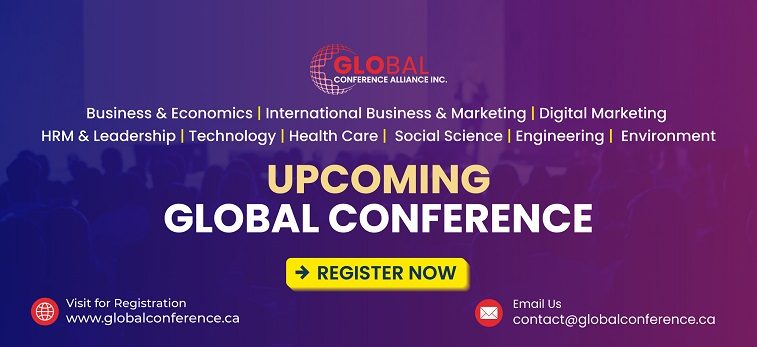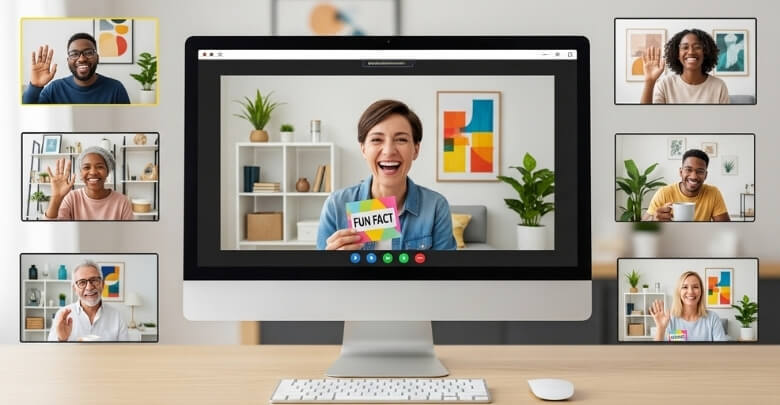Conferences gather experts, professionals, and new connections under one roof. However, those first few minutes can feel tense or disconnected as attendees hesitate to engage. That’s where icebreakers come in; they help participants relax, start conversations, and build early rapport. In simple terms, the answer to why icebreakers important in conference settings is that they create comfort and energy, setting a positive tone for everything that follows.
By breaking down barriers and encouraging open interaction, icebreakers transform formal gatherings into collaborative environments. If you’re planning your next event, let’s explore how these simple activities can make your conference more engaging and memorable.
Why Icebreakers Important in Conference?
Icebreakers play a vital role in transforming conferences from formal gatherings into interactive experiences. They help attendees relax, communicate, and connect from the very beginning. Whether it’s a professional summit or upcoming conferences in Canada, the USA, or other global events, icebreakers ensure every participant feels involved and engaged from the start.
Beyond introductions, these activities encourage open discussions and stronger professional bonds. They create energy, break hesitation, and help participants focus better throughout the event. Discover below why icebreakers are an essential part of every successful conference experience.
Diverse Audience Connection
Conferences often bring together people from different industries, cultures, and expertise levels. Icebreakers help everyone connect on a personal level, bridging gaps and creating a welcoming environment. When attendees feel comfortable early on, they’re more likely to engage openly, share insights, and collaborate productively throughout the sessions.
Stronger Networking and Relationship Building
Networking is one of the main reasons professionals attend conferences. Icebreakers make introductions effortless, helping participants overcome initial hesitation. These simple activities spark authentic conversations, making it easier for attendees to find common ground and form meaningful professional relationships that extend beyond the event.
Revitalizing Energy Across Multi-Day Events
Multi-day conferences can sometimes lead to mental fatigue and low energy levels. A quick, well-placed icebreaker re-energizes attendees, refreshes focus, and restores enthusiasm between long sessions. This small boost can make the difference between a disengaged audience and one that actively participates until the end.
Setting a Positive Tone for Collaboration
The opening atmosphere of a conference determines how people interact for the rest of the event. Icebreakers transform formal settings into friendly spaces, easing anxiety and encouraging collaboration. When attendees feel at ease from the start, they’re more willing to share ideas and work together effectively.
Enhancing Audience Participation
Icebreakers encourage even the quietest participants to get involved. By lowering communication barriers, they help people speak up, ask questions, and participate confidently. When the audience feels connected and comfortable, it leads to more dynamic discussions and valuable exchanges throughout the conference sessions.
Encouraging Creative Thinking
Icebreakers stimulate creativity by inviting attendees to think differently and share freely. They create a relaxed setting where new ideas can flow without fear of judgment. This creative momentum often carries over into workshops and discussions, inspiring innovation and deeper engagement across the entire conference.
Icebreakers do more than start conversations; they build the foundation for successful conferences. When used thoughtfully, they energize participants, strengthen connections, and set a positive tone that lasts long after the final session concludes.
How to Choose the Right Icebreaker for Your Conference?
Selecting the right icebreaker can determine whether your event starts with energy or awkward silence. A good choice fits the audience, timing, and purpose of the session. Let’s look at how to pick one that aligns with your goals and transitions smoothly into the next stage of engagement.
Match the Activity Type to the Event Format
Every conference format requires a different approach. In-person events benefit from movement-based or partner-sharing activities, while virtual settings thrive on quick polls and breakout chats. The key is to choose an icebreaker that fits both the environment and available technology for maximum impact.
Keep It Purpose-Driven, Not Just Entertaining
A fun activity without a goal loses value quickly. Before selecting, decide whether you aim to promote networking, teamwork, or creativity. The best icebreakers serve a defined purpose, helping participants connect meaningfully instead of simply passing time or filling schedule gaps.
Respect Cultural and Accessibility Differences
Modern conferences often include global and diverse audiences. Choose activities that respect various backgrounds, physical abilities, and comfort levels. Avoid anything that may isolate or embarrass participants. Inclusive icebreakers help everyone feel welcome, setting a respectful tone for the rest of the event.
Balance Time and Energy With Session Length
Timing determines the success of an icebreaker. High-energy activities work best in the morning, while lighter, reflective ones suit post-lunch or end-of-day sessions. The goal is to match the activity’s intensity with your audience’s attention span and the flow of your agenda.
Understand the Purpose Behind Conference Icebreakers
Knowing the definition of conference icebreakers helps you select activities that truly fit your event. These aren’t random games; they’re strategic tools to break tension, encourage communication, and build engagement. When organizers treat them as part of the conference experience, participation feels natural and meaningful.
Test and Adjust Based on Audience Size
A small workshop group might enjoy open discussions, while a large conference requires structured or app-based interaction. Test your icebreaker beforehand to gauge timing and engagement levels. This simple step helps ensure smooth execution and a positive audience response.
The right icebreaker is one that feels natural, purposeful, and inclusive. By considering audience type, timing, and cultural fit, you can create moments that connect participants instantly and set the tone for a successful, engaging conference experience.
Common Mistakes Organizers Make With Icebreakers
Even the best conferences can fall flat if the opening activity misses the mark. Icebreakers work only when they match the tone, timing, and audience. Avoiding a few simple mistakes can make your sessions more engaging and natural. Let’s explore them before moving to the next discussion.
Picking Games That Feel Forced or Juvenile
Professional audiences expect meaningful engagement, not classroom-style games. Choosing activities that feel childish or irrelevant can make participants disconnect quickly. Instead, select something that aligns with their expertise and encourages authentic interaction without making anyone feel uncomfortable or out of place.
Ignoring Audience Context and Professional Boundaries
Every audience has a different comfort zone. Using humor or personal questions in a formal event can create awkwardness. Consider the age group, professional setting, and relationship between attendees before selecting an activity to ensure it supports connection rather than discomfort.
Skipping Debrief or Reflection After the Activity
A quick reflection helps participants connect the activity to the event’s theme or purpose. Without it, an icebreaker can feel disconnected or meaningless. Spend a minute asking what they learned or how it relates to the session to make the experience more impactful.
Overusing or Repeating the Same Format
When the same type of icebreaker appears repeatedly throughout a conference, enthusiasm fades fast. Repetition turns excitement into predictability. Try alternating between individual, group, and virtual formats to maintain freshness and sustain audience energy from one session to another.
Poor Timing and Lack of Flow
An icebreaker placed at the wrong moment can feel disruptive rather than engaging. Avoid starting one when attendees are tired, distracted, or expecting a major presentation. Proper timing ensures the activity complements the agenda and builds momentum instead of draining focus.
The success of any icebreaker lies in thoughtfulness, not complexity. By respecting context, choosing the right tone, and balancing timing, you can create moments that genuinely connect participants and elevate the overall conference experience.
Unique Icebreaker Ideas for Conferences
Choosing the right activities can turn an ordinary event into an engaging experience. Creative and well-structured icebreakers make it easier for large groups to connect and participate actively. Below are some of the most effective icebreaker activities for big conferences that help audiences bond naturally and energize the room. Let’s explore these ideas before moving to the next discussion.
Networking Bingo
Hand out cards with fun professional prompts like “Has spoken at a keynote,” “Traveled over 1,000 miles,” or “Attending their first conference.” Attendees mingle to find matches and complete rows. It is a lively, interactive way to spark conversations among strangers and encourage early networking.
Two Truths and One Insight
Ask participants to share two true facts about their professional experience and one valuable industry insight. This variation keeps the game relevant and informative while revealing shared interests. It is especially effective for large audiences looking to connect through expertise rather than small talk.
Thematic Trivia Poll
Use your event app or live polling tool to ask quick, theme-based trivia questions. Mix educational and fun questions about the industry or speakers to keep participants alert. This format breaks monotony, encourages friendly competition, and builds anticipation for upcoming sessions.
Speed Networking Carousel
Organize short one-on-one or small-group conversations where attendees rotate every few minutes. Provide prompts like “What project excites you most right now?” or “What challenge do you hope to solve here?” The setup helps participants exchange ideas efficiently and build connections without pressure.
Virtual and Hybrid Icebreakers
For online or blended events, use breakout rooms, chat prompts, or digital boards. Ask participants to share one challenge they face in their work and one goal for the conference. These quick exchanges create meaningful engagement and ensure virtual attendees feel equally involved.
Industry Wall of Insights
Set up a physical or digital “wall” where attendees can post their best advice or lessons learned in their field. This simple, ongoing activity keeps engagement alive throughout the event and allows everyone to contribute, reflect, and learn collectively.
The most successful icebreakers are those that match your audience’s size, tone, and purpose. By incorporating creative, inclusive, and well-timed activities, you can turn your conference into an energetic space where meaningful connections and ideas thrive.
Virtual and Hybrid Conferences: Icebreakers That Work Online
As virtual and hybrid events become more common, icebreakers must evolve to keep participants engaged across screens. Digital environments require creative strategies to connect attendees who may never meet in person. Below are proven ideas to make your online sessions more interactive and inclusive. Let’s explore these before moving to the next discussion.
Breakout Room Conversations
Use breakout rooms in platforms like Zoom or Microsoft Teams to pair participants for short, focused conversations. Give them a simple prompt such as “What inspired you to join this conference?” These intimate exchanges help people relax, build rapport, and prepare for larger group interactions.
Interactive Polls and Quick Surveys
Start your virtual session with a short poll or quiz related to the event theme. Ask questions like “Which topic are you most excited about today?” This instantly engages participants, encourages active participation, and helps hosts understand the audience’s preferences early on.
Digital Whiteboard Sharing
Invite attendees to use a virtual whiteboard and write one thing they hope to learn and one thing they can contribute. Seeing everyone’s input builds a sense of unity and collective purpose, making the digital environment feel more like a shared conference space.
Hybrid Inclusion Activities
In hybrid settings, ensure remote participants feel equally included. Run parallel activities where online attendees can join discussions or polls alongside in-person groups. Simple gestures, such as reading remote responses aloud, help merge both audiences into a single, cohesive experience.
Visual Icebreaker Games
Ask participants to show a meaningful object from their workspace or change their virtual background to represent something about themselves. These quick visuals spark conversation, lighten the atmosphere, and make virtual introductions more personal and enjoyable for everyone involved.
Successful virtual and hybrid icebreakers rely on thoughtful planning, accessible tools, and active facilitation. When used effectively, they eliminate distance barriers, foster real connections, and create the same sense of belonging as an in-person conference.
Timing and Placement: When to Use Icebreakers During a Conference?
The timing of an icebreaker can determine whether it energizes your audience or disrupts their focus. Well-timed activities can refresh attention, encourage participation, and strengthen the event’s flow. Let’s look at when to use them effectively before moving to the next discussion.
- Before the Keynote: Starting with a short, engaging icebreaker helps attendees relax, break the tension, and get comfortable with the crowd. It builds anticipation for the keynote and makes the session feel more welcoming and inclusive.
- Between Panel Discussions: After back-to-back sessions, audience attention can dip. A light, energizing activity between panels resets focus, helps participants recharge, and prepares them to absorb new ideas with renewed interest.
- At Networking Receptions or Lunch Breaks: Using a quick activity during breaks sparks conversations among attendees who might not interact otherwise. It creates a relaxed setting for networking and builds stronger social connections beyond formal sessions.
- Before Workshops or Breakout Sessions: A focused icebreaker before smaller group activities encourages collaboration. It helps participants feel comfortable sharing opinions, brainstorming, and engaging actively throughout hands-on or interactive discussions.
- During Closing Reflections: Ending with a brief wrap-up icebreaker reinforces lessons learned, celebrates shared experiences, and leaves attendees with a sense of accomplishment and connection as they depart the event.
Effective timing ensures icebreakers enhance, not interrupt, your conference agenda. When placed thoughtfully, they maintain energy, improve transitions, and create meaningful moments that tie your sessions together seamlessly.
Frequently Asked Questions
After learning about the importance and impact of icebreakers in conferences, you might still have a few questions about how to apply them effectively. Below are some commonly asked questions that can help you plan and execute engaging, memorable icebreaker sessions.
How Can I Measure the Success of an Icebreaker?
You can measure success by observing engagement levels and audience reactions. If participants are smiling, talking, or actively sharing, it’s a good sign. Post-session feedback forms or quick polls can also help assess the activity’s impact on interaction and comfort.
What Type of Icebreakers Work Best for Introverted Participants?
Gentle, low-pressure activities work best for introverts. Try written prompts, silent polls, or small group discussions instead of public speaking games. The goal is to make everyone comfortable without forcing interaction or spotlighting anyone.
Should Icebreakers Always Relate to the Conference Theme?
Not always, but connecting them to the event’s purpose can enhance engagement. A relevant theme helps participants link the fun activity with learning objectives, making the icebreaker feel purposeful rather than random or disconnected from the conference flow.
How Long Should an Icebreaker Usually Last?
A good icebreaker should take between five and ten minutes. It’s enough time to warm up participants without cutting into your main schedule. Longer activities can cause fatigue or distract from the core conference agenda.
Can I Use Technology to Make Icebreakers More Engaging?
Yes, technology can enhance interaction through polls, chat apps, and live quizzes. Digital tools allow large groups to participate at once and keep remote attendees involved, creating a unified experience for both in-person and virtual audiences.
What Should I Do If an Icebreaker Doesn’t Go as Planned?
Stay calm and flexible. If participation is low, gently encourage involvement or move to the next session. Sometimes, adjusting tone or simplifying instructions can help regain attention without making the audience uncomfortable.
How Often Should Icebreakers Be Used During Multi-day Conferences?
Ideally, start each major session or day with a short activity. Vary formats to keep things interesting. Too many icebreakers can feel repetitive, but well-timed ones help maintain energy and strengthen networking opportunities throughout the event.
Conclusion
Effective conferences are built on connection, not just content. The reason why icebreakers important in conference settings is simple: they create comfort, open communication, and build trust among participants. By breaking the initial tension, they turn audiences into active contributors, setting a cooperative tone that lasts throughout the event.
When chosen thoughtfully and placed strategically, icebreakers can transform a formal atmosphere into an engaging environment. They help participants connect across roles, ideas, and industries, making every session more meaningful. So, instead of treating them as an extra, view icebreakers as a vital starting point for every successful conference experience.








